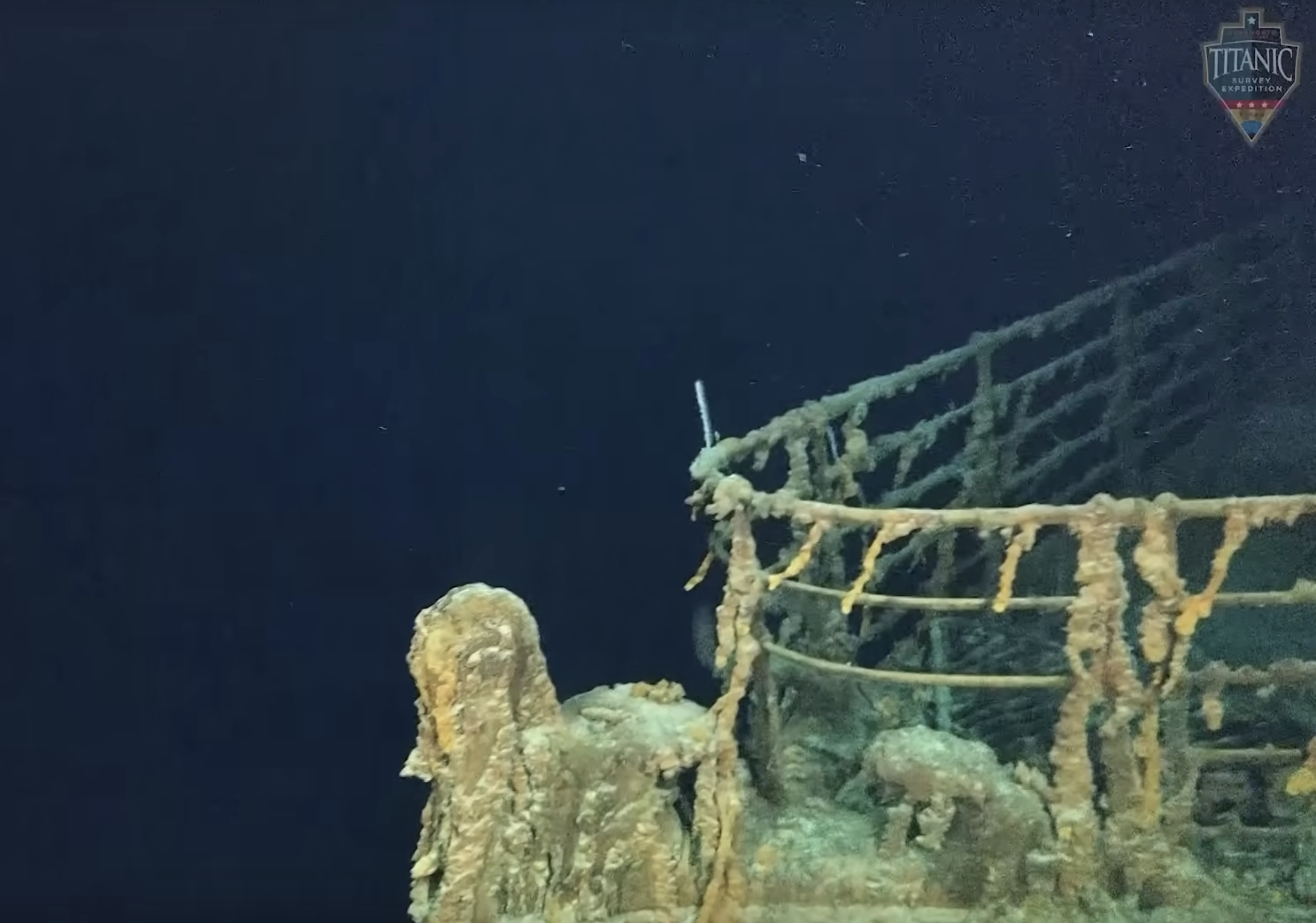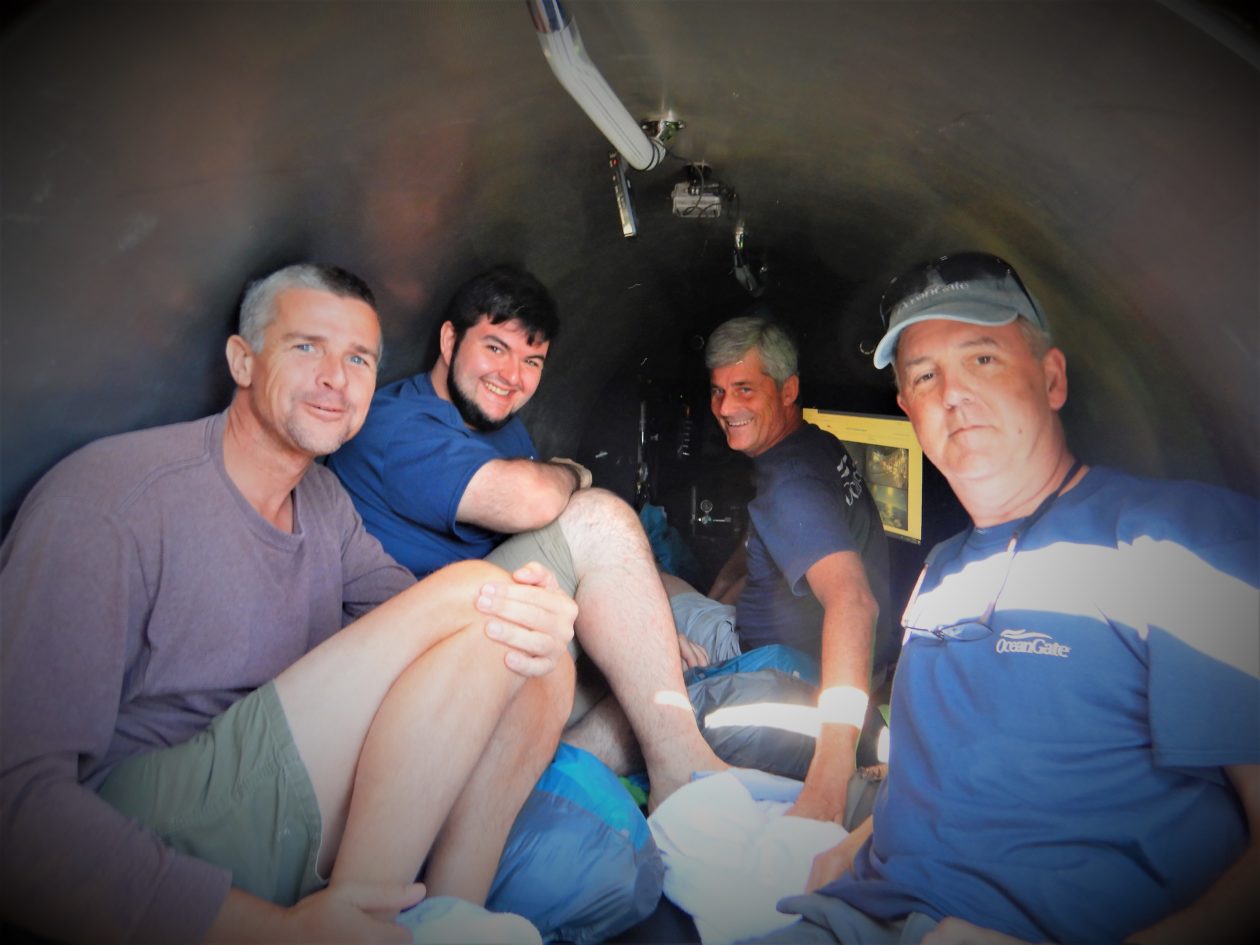 [Updated] On Sunday, June 18, the Titan submersible headed more than two miles down to the wreck of the Titanic. About half way through its scheduled descent and return off the coast of Newfoundland, the privately-owned submersible vanished.
[Updated] On Sunday, June 18, the Titan submersible headed more than two miles down to the wreck of the Titanic. About half way through its scheduled descent and return off the coast of Newfoundland, the privately-owned submersible vanished.
Most news reports have shared scant information about successful dives.
OceanGate completed its first successful expedition to the Titanic in the summer of 2021, according to a company news release in December. The second successful expedition took place in 2022, according to the New York Times. An expedition might include more than one trip to the Titanic, however.
The company that made the missing submersible, OceanGate, is privately-held and located in Everett WA. GeekWire, a Seattle-area tech news organization, published two news stories about Titan in 2021: one in July and one in August.
There were technical issues with the 2021 expedition:
“On the first dive to the Titanic, the submersible encountered a battery issue and had to be manually attached to its lifting platform,” the company’s legal and operational adviser, David Concannon, wrote in the document, which was filed in the U.S. District Court for the Eastern District of Virginia, which oversees matters having to do with the Titanic. The submersible sustained modest damage to its exterior, he wrote, leading OceanGate to cancel the mission so it could make repairs.
In 2022, both Geekwire and CBS reported a successful dive to the Titanic. According to the New York Times, 28 people visited the Titanic in 2022.
The Titan can hold five; its dimensions: 22’x9’x8′.
British billionaire businessman/explorer Hamish Harding posted on Facebook: “Due to the worst winter in Newfoundland in 40 years, this mission is likely to be the first and only manned mission to the Titanic in 2023.”
Submersible history
OceanGate touts the fact that the company worked with the University of Washington (UW) Applied Physics Lab to design its submersibles. In 2013, a UW news release stated the wall of the submersible they were building (named Cyclops) would contain seven inches of carbon fiber:
The Boeing Company worked with OceanGate and the UW on initial design analysis of the 7-inch-thick pressure vessel… The front viewing area, for which the vehicle is named, is designed as a 5-foot-wide dome of 4-inch-thick glass. Passengers will sit inside the dome to have a 180-degree view.
The Cyclops was built to travel only to 3,000 meters (9,842 feet), short of the depth of the Titanic (3,862 meters / 12,672 feet).
The hull of the Titan (a Cyclops-class submersible) reportedly contains 5 inches of carbon fiber and 3.25 inches of titanium. It is the only “crewed submersible” composed of carbon fiber and titanium, according to OceanGate founder and CEO Stockton Rush. Rush is “aboard the submersible as a member of the crew.”
- In 2018, OceanGate successfully lowered the Titan to 4,000 meters off the coast of the Bahamas. OceanGate had to postpone its planned 2018 dive to the Titanic due to issues uncovered in the Bahamas test.
- In 2019, a crew of four rode took the Titan submersible to 3,760 meters (12,336 feet) off the coast of the Bahamas. The company canceled its planned visit to the Titanic.
- No Titanic dive took place in 2020.
- OceanGate announced its first successful dive to the Titanic on July 13, 2021.

How a dive works
As Geekwire reported on June 19:
The Titan submersible’s five-person crew typically includes a pilot and researchers as well as mission specialists who have paid $250,000 to be part of the expedition. Crew members take turns heading down to the Titanic shipwreck site from a mission control ship that sails out to the site from Newfoundland, and then returns to port to pick up the next expedition crew.
David Pogue, formerly of the New York Times, traveled on a mission to the Titanic for “CBS Sunday Morning” in 2022.
Here’s how the launch is supposed to go: The sub is attached to a huge floating platform. Motorboats drag it down the big orange ramp into the sea. The platform submerges to about 30 feet, where the water is much calmer than on the surface. Divers detach the sub from the platform … and away you go!
Pogue reported that initially, Atlantic Ocean waves were “too big” to launch. Plan B: head 80 miles for a dive off the Continental Shelf.
Our dive in the OceanGate submersible had made it down only 37 feet when floats came off the platform. And that wasn’t supposed to happen. The mission was scrubbed…
Renata Rojas said, “Every expedition has its challenges, all of them. I have not been in one expedition where things haven’t had to be adjusted, adapted, changed or cancelled at the end of the day. You’re at the mercy of the weather.”
Rojas speaks from painful experience. Over the years, she’s been booked on three Titanic expeditions. All three were canceled.
On day six, Pogue’s expedition headed for the Titanic. But at 3,742 meters, the Titanic was no where in sight. “We were lost,” said Shrenik Baldota. “We were lost for two-and-a-half hours.”
One more try, and success.
Many raised safety concerns
In 2018, CEO Stockton Rush fired whistleblower David Lochridge, director of marine operations, when he raised questions about safety. For example, although the Titan would need to descend to almost 4,000 meters (13,000 feet), “the passenger viewport was only certified for depths of up to 1,300 meters (4,265 feet).
Also in 2018, 38 members of the Manned Underwater Vehicles committee of the Marine Technology Society told OceanGate that they “had ‘unanimous concern‘ about the way the Titan had been developed, and about the planned missions to the Titanic wreckage.”
The vehicle has had no third-party review or certification.
Update June 21 @ 1.30 pm. Added timeline in section two; corrected meters-to-feet measurement in final section.
~~~
Featured image: screen capture from OceanGate YouTube video.
Kathy E. Gill: twitter | mastodon | facebook | linkedin
Known for gnawing at complex questions like a terrier with a bone. Digital evangelist, writer, teacher. Transplanted Southerner; teach newbies to ride motorcycles. @kegill (Twitter and Mastodon.social); wiredpen.com
















